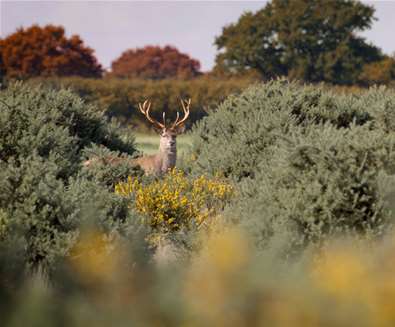The swallows and nightingales may have migrated south for the winter, but there’s still some amazing wildlife encounters to be experienced at RSPB Minsmere during the colder winter months.
We spoke to Ian Barthorpe, Visitor Experience Officer at RSPB Minsmere to find out what delights are in store for visitors this winter...
The swallows and nightingales may have migrated south for the winter, but there’s still some amazing wildlife encounters to be experienced at RSPB Minsmere during the colder winter months.
Even the dullest days will be brightened by golden gorse flowers in the car park on your arrival, followed by flocks of finches and tits taking advantage of the easy pickings on offer at our bird feeders.
A stroll around the coastal trail is sure to produce large flocks of ducks on the Scrape in their dazzling plumage: tiny teals with orange and green heads; whistling wigeons wearing a cream forehead stripe across their chestnut heads; dapper grey and black gadwalls; and shovelers sporting unfashionably large bills.
Look out among the ducks for wispy-crested lapwings and superbly camouflaged snipe. Later in the winter there may be one or two smart smews too, escaping the cold Arctic winters for the security of the Suffolk coast.
Minsmere is a regular winter home for a small flock of Bewick’s swans too. They join us from their breeding territories in Arctic Russia, at least 3000 miles to the east, and their arrival signals the change from autumn to winter.
Suffolk’s vast reedbeds are alive with birdsong in spring, but can appear eerily quiet in winter. Quiet, that is, until the pig-like squeal of a water rail or the explosive song of a Cetti’s warbler grab your attention. Seeing the owners of these sounds is extremely difficult though.
Spend some time in Bittern or Island Mere Hides and you will be rewarded with at least a glimpse of some of the elusive reedbed wildlife. A bittern may flap lazily above the reeds, or even parade around the pools in front of the hides, defying their reputation as shy birds.
Bearded tits flit among the reeds and marsh harriers soar gracefully overhead, but the real star of the show, for those lucky enough to spot it, is the otter. Winter is the best time to see these aquatic mammals fishing in the pools, with sightings possible at any time day.
The red deer rut may be long since finished, but these majestic mammals can still be easily spotted browsing the woods or resting in fields alongside the reserve’s entrance roads.

Late autumn and early winter is a great time to spot fungi among the leaf litter of the woodland floor, adding a touch of colour whilst most of the flowering plants remain dormant.
After a pleasant walk around Minsmere’s various nature trails, you can relax, refuel and warm up in the café, sampling our delicious soups, snacks and cakes. The cheese scones, especially, are to die for. There’s no need to feel guilty either, as our coffee is ethically sourced and grown in a wildlife friendly way.
Just time to restock your bird feeders, treat a loved one to a special gift, or seek expert advice on which binoculars to buy from our friendly and knowledgeable hop team, before heading back out onto the reserve in time to catch the impressive murmuration of starlings.
Up to 50,000 starlings were gathering in swirling flocks by the end of October, though numbers will fluctuate throughout the winter, and the entire flock may relocate to other coastal reedbeds, but if they’re still present then a pre-dusk visit is essential. Aim to be on site about 45 minutes before dark, in time for the show to begin.
For the latest information about visiting Minsmere, including recent sightings, upcoming events, and opening times, please see www.rspb.org.uk/minsmere. You can also follow them on Twitter @RSPBMinsmere or like RSPBSuffolk on Facebook for the latest news.